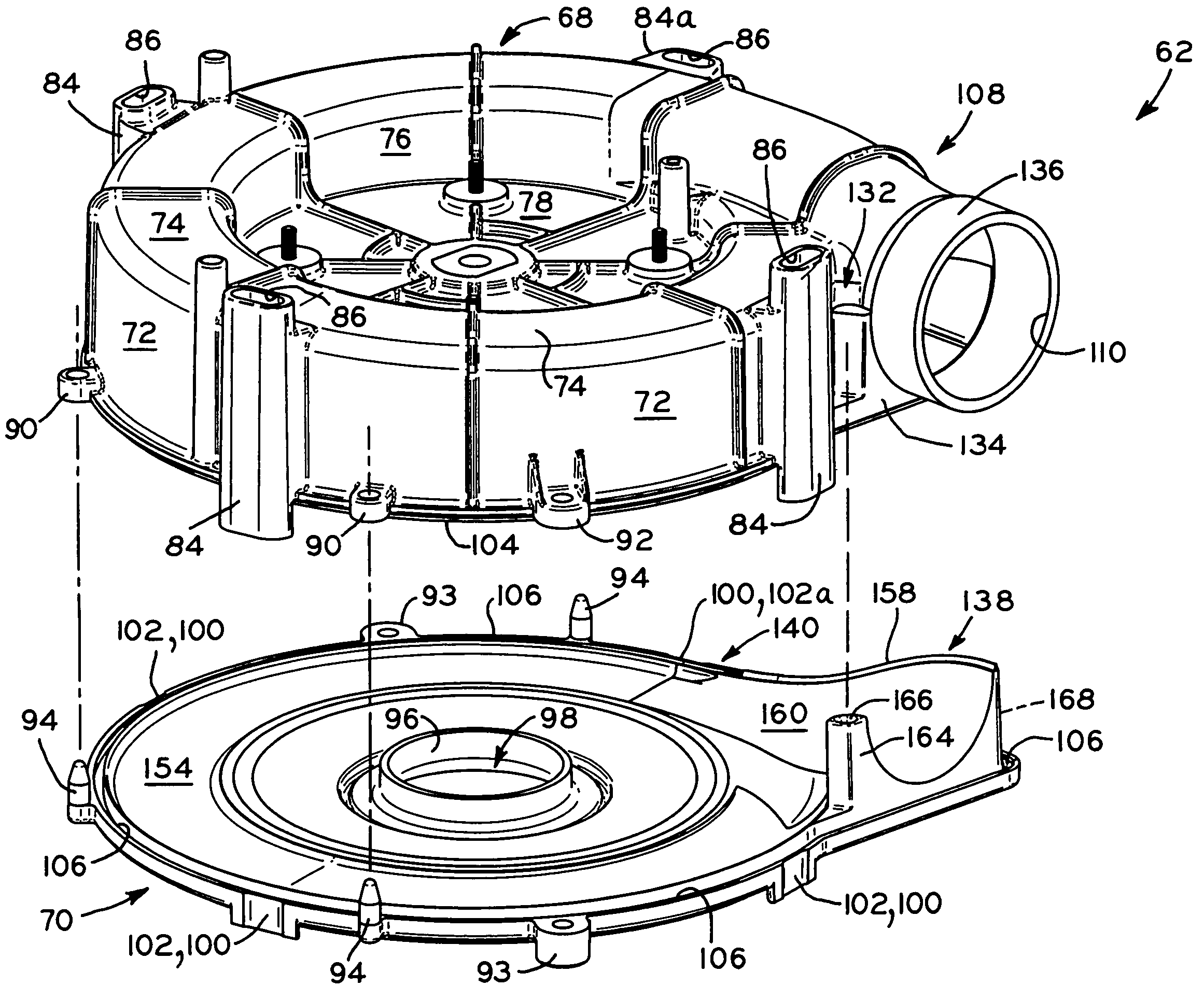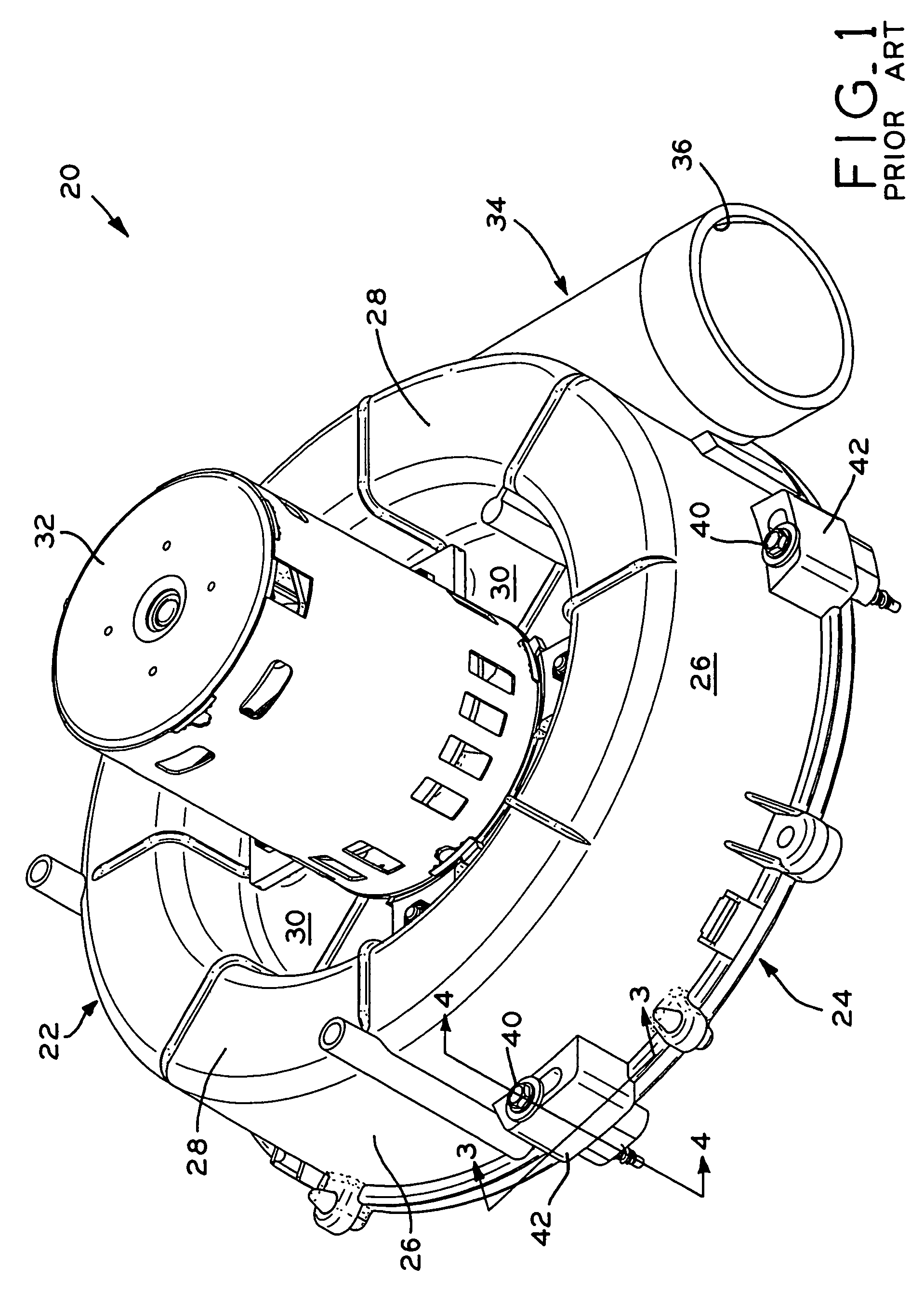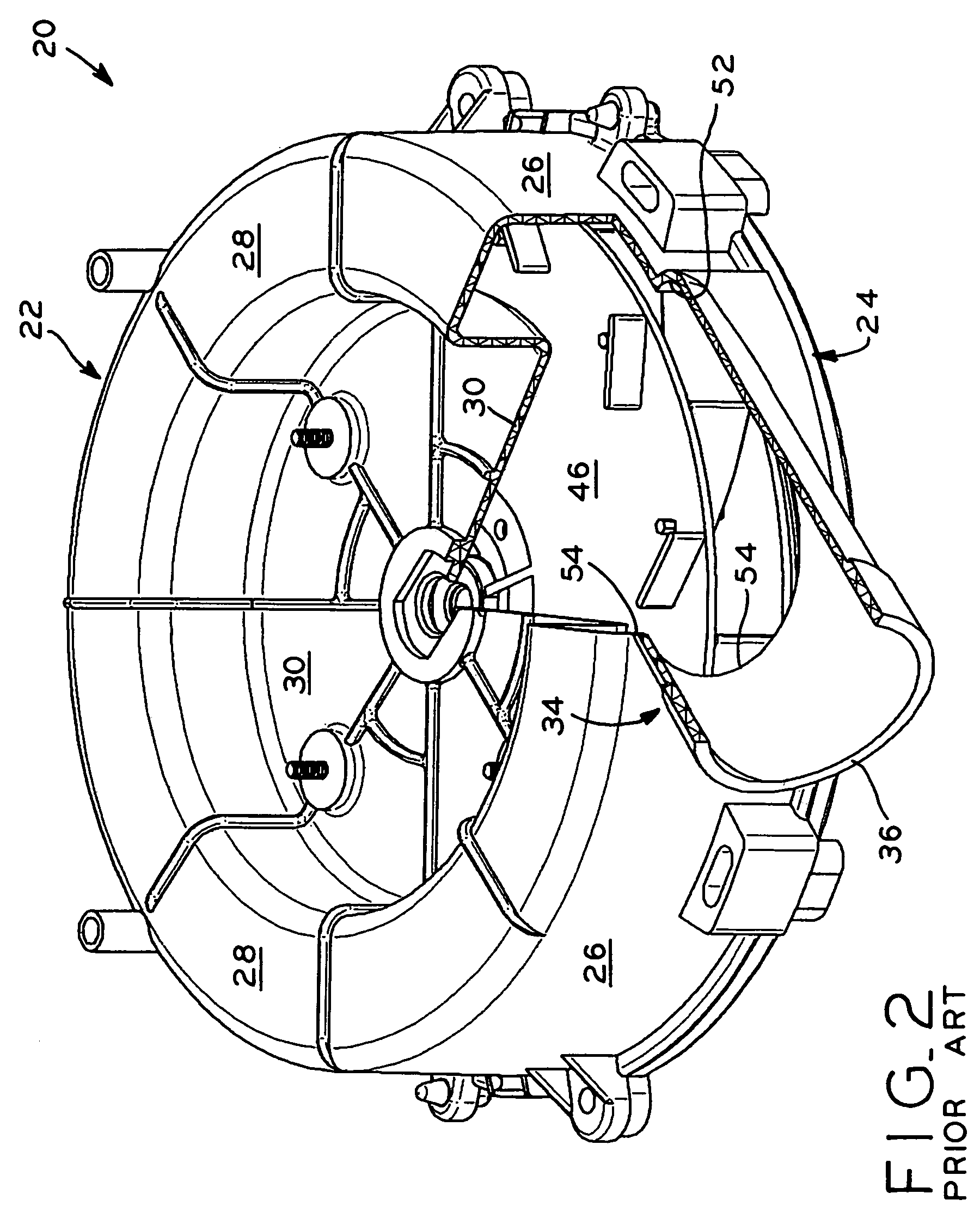Lobed joint draft inducer blower
a blower and joint technology, applied in the direction of machines/engines, stators, liquid fuel engines, etc., can solve the problems of compromising the air flow efficiency of the blower housing and generating noise, so as to reduce the noise of the air flow, facilitate maximum air flow efficiency, and high efficiency
- Summary
- Abstract
- Description
- Claims
- Application Information
AI Technical Summary
Benefits of technology
Problems solved by technology
Method used
Image
Examples
Embodiment Construction
[0033]Referring first to FIGS. 5–7, a blower 60 for a high efficiency furnace according to the present invention is shown. Blower 60 generally includes blower housing 62, electric motor 64 mounted to blower housing 62, and an impeller (FIGS. 7 and 8), described below, mounted to the output shaft 66 of motor 64 and disposed within blower housing 62. Blower housing 62 generally includes a first housing member or housing body 68, and a second housing member or housing cover 70. Housing body 68 and housing cover 70 may be formed of metal or plastic according to an injection molding process, for example. Suitable plastics for housing body 68 and housing cover 70 include polypropylene or other thermoplastics. Housing body 68 includes a generally cylindrical outer wall 72, an annular top wall 74, an inner wall 76, and a circular, recessed wall 78. Motor 64 is attached to recessed wall 78 by a plurality of fasteners 80 which pass through mounting flanges 82 of motor 64 and into holes in rec...
PUM
 Login to View More
Login to View More Abstract
Description
Claims
Application Information
 Login to View More
Login to View More - R&D
- Intellectual Property
- Life Sciences
- Materials
- Tech Scout
- Unparalleled Data Quality
- Higher Quality Content
- 60% Fewer Hallucinations
Browse by: Latest US Patents, China's latest patents, Technical Efficacy Thesaurus, Application Domain, Technology Topic, Popular Technical Reports.
© 2025 PatSnap. All rights reserved.Legal|Privacy policy|Modern Slavery Act Transparency Statement|Sitemap|About US| Contact US: help@patsnap.com



